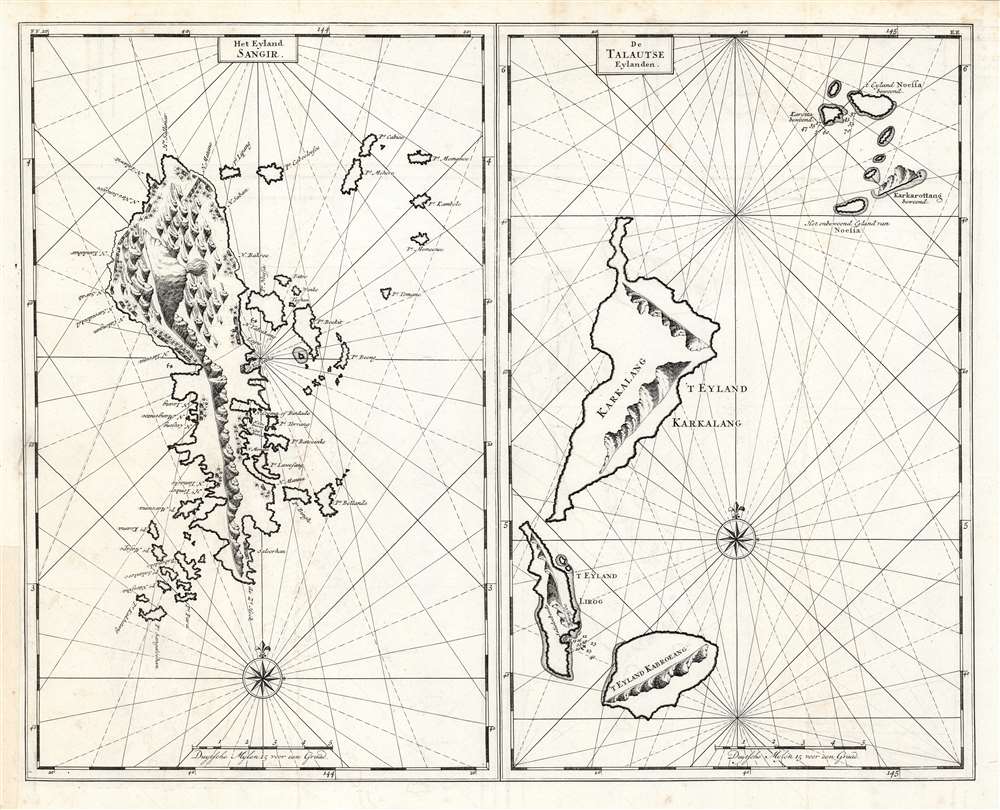1724 Valentijn Charts of the Sangihe and Talaud Islands, Indonesia
SangiTalaud-valentijn-1724
Title
1724 (undated) 17.75 x 22.5 in (45.085 x 57.15 cm) 1 : 430000
Description
Publication History and Census
This engraving was cut by Frederik Ottens for the second volume of François Valentijn's Oud en nieuw Oost-Indiën, printed in 1724. There are two separate examples of this chart cataloged in OCLC at the National Library of Australia, and Universiteit Leiden. The book is well represented in institutional collections.Cartographer
Francois Valentijn (April 17, 1666 - August 6, 1727) was a Dutch minister, naturalist, colonial administrator, and historian active in Holland and the East Indies, in the late 17th and early 18th centuries. Valentijn was born in Dordrecht, Holland and studied at the Universities and Leiden and Utrecht before, in 1685, taking a position with the Dutch East India Company (VOC). He remained in the East Indies for about 10 years before returning to Dordrecht. Unable to adjust to life in Europe, he returned to the East Indies in 1705 where he remained for another 9 years. After 19 total years in the Orient working for the VOC, Valentijn once again returned to Holland where he composed his eight volume five part masterwork Oud en Nieuw Oost-Indien. The scope and detail of this work, including over 1000 engraved images and numerous maps was unprecedented with regards to Asia. The work contained some of the finest and most detailed large scale maps of the East Indies ever published. The most important of these focus on Taiwan and Malaya. Valentijn most likely drew on secret VOC manuscript maps and documents, a fact that makes it exceptionally surprising that his works were actually published. Valentijn academic scholarship, in sharp contrast to his cartographic work, is often highly criticized as being self-aggrandizing and, more often than not, plagiarized. More by this mapmaker...

